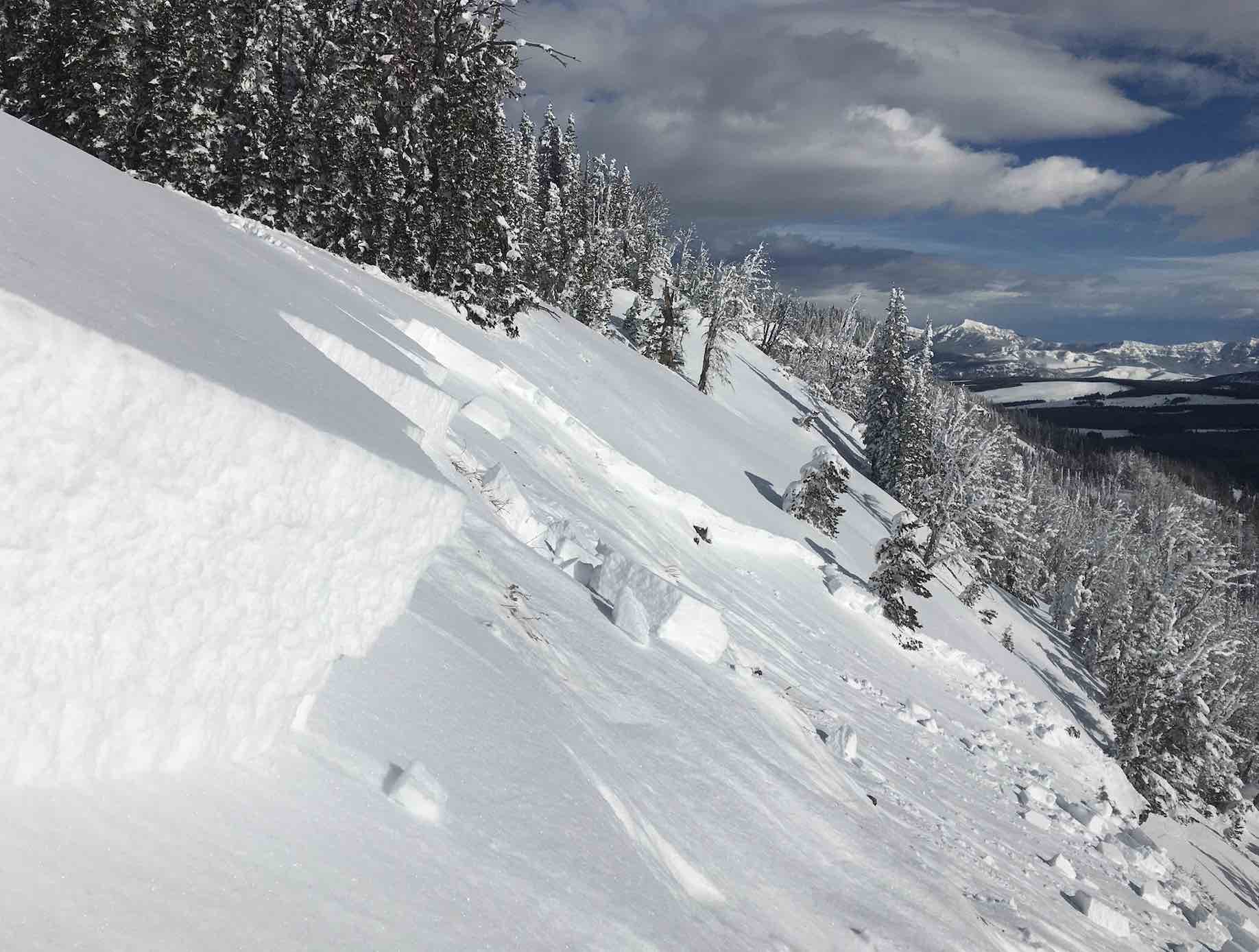By Bella Butler EBS STAFF
MONTANA – For those opting to forgo the ticket reservation systems and limited pass availability of southwest Montana’s ski resorts stricken by pandemic reality, traveling through the backcountry may be the preferable option. Recreation in uncontrolled terrain, however, comes with its own set of risks.
In order to follow one of the most emphasized axioms of the backcountry world, “Know Before You Go,” having the proper avalanche education, including a literacy in avalanche forecasts, is essential to understanding and weighing risk when moving through the backcountry.
“It’s really important to read the forecast because the snowpack stability changes rapidly,” said Doug Chabot, director of the Gallatin National Forest Avalanche Center. “It can change day to day based on snowfall, wind, the sun, temperatures. It’s really hard to keep track of all that so we keep track of it for you.”
A common evil that can make a snowpack questionable throughout the entire season is the ever-dreaded persistent weak layer. This is a component of the snowpack that is often discussed in avalanche forecasting and is a warning that should be seriously heeded.
A safe snowpack for backcountry users is a stable snowpack, or one in which the layers have bonded together to create a cohesive solid snowpack. A weak layer is a layer of snow in the snowpack that can easily collapse and potentially set off a snow slide. A persistent weak layer, Chabot says, is exactly what it sounds like: a weak layer that persists to exist, sometimes throughout the whole season. This layer will continuously fail to heal or properly bond with other layers in the snowpack. Weak layers are most often caused by persistent and stagnant snow grain types, like facets, surface hoar and depth hoar.
Facets form in a snowpack when there is a large temperature gradient, or a large change in temperature throughout the snowpack. Facets, which feel like sugar in your hands, are the formidable counterpart to rounded snow crystals, which bond well and create a stable snowpack.
Surface hoar are the beautiful feather-like ice crystals that show up on the surface of the snow, or sometimes even on your windshield. These dangerously fragile crystals form in cold, clear conditions. When buried, hoar can form a weak layer that is hard to detect.
Depth hoar, another threatening grain, forms near the base of the snowpack, when the combination of the warm ground and cold clear conditions at the surface creates a high temperature gradient.
Since November, the Gallatin National Forest Avalanche Center has been reporting a persistent weak layer that Chabot says formed from early snow in October that sat unburied and exposed to cold temperatures for enough time to create a layer of facets.
“We will be talking about this weak layer for months. It does not go away quickly, and it’s going to be a problem for a lot of the winter,” Chabot told EBS on Dec. 28. With a slow start to the season, Chabot suspects riders, snowmobilers and skiers will be eager to get into the backcountry as soon as a big storm rolls through and deposits an enticing layer of powder. But stoke should be paired with caution, as the persistent weak layer will be further buried but still dangerous.
To armor yourself against this layer, Chabot recommends a few things: read the forecast, always bring a partner and rescue gear (that you both know how to use) and stay attuned to signs of instability like breaking snow and “whoomfing” noises while traveling.
For more information on local avalanche safety and to access the avalanche forecast, visit mtavalanche.com.
This article sourced information from a snow science curriculum created by Andrew E. Slaughter from Montana State University and former Big Sky School District teacher Dave Neal.

